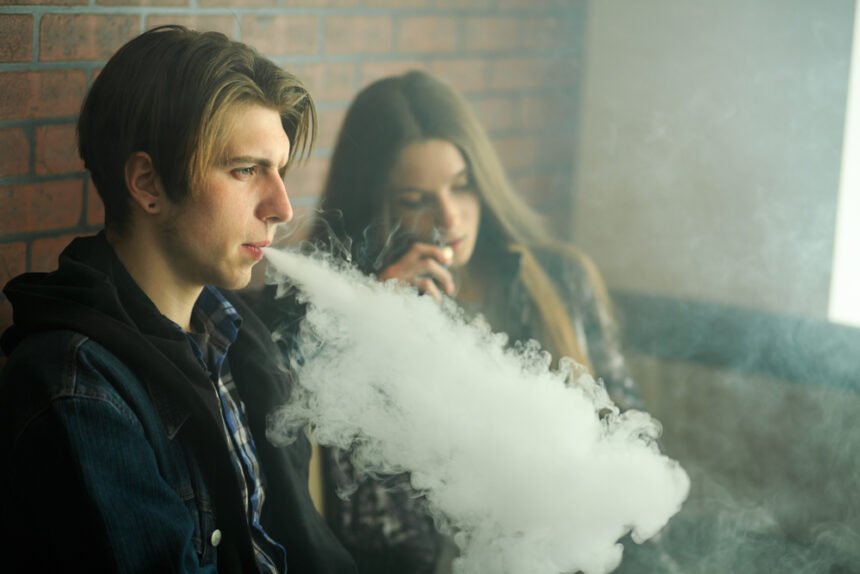Is it possible that the vaping epidemic is fueled – in part – by teens’ need to process unresolved childhood trauma? Between 2011 and 2015, there was a 900% surge in e-cigarette use by kids. Many kids think vaping is a popular, harmless alternative to smoking. Typically, teens believe that vaping is an innocuous pastime that consists of inhaling and exhaling water vapor. Instead of offering teens a safe stress reliever, however, the grossly massive financial war chest of vaping manufacturers has compelled many of the nation’s teens to become guinea pigs for an untested and unsafe product.
It’s Just Not Worth It
The ingredients in cigarettes are harmful and addictive, and vaping products are just as – if not more – dangerous. Researchers don’t know exactly what chemicals manufacturers put in vaping products. However, they do know that health outcomes for vape product users are undesirable – and sometimes even fatal. Setting aside for a moment the harmful effects of the chemicals in vape products, the shape and build of e-cigarettes make them more likely to explode, according to the U.S. Fire Administration. Fire Administration officials report that when the lithium-ion batteries in vape products explode, they perform like flaming rockets. Between 2015 and 2017, over 2,000 consumers went to the emergency room with burns due to e-cigarette explosions. Victims suffered from a range of maladies, including:
- Eliminated sections of their face or mouth
- Eye damage
- Lost teeth
- Third-degree burns
In some cases, victims have died from their injuries. Furthermore, manufacturers have not produced e-cigarettes long enough for researchers to determine the long-term effects of using the products. Nevertheless, researchers worry that the chemicals in vape products can cause popcorn lung. Researchers named the disease after the symptoms produced by diacetyl, which manufacturers formally used to enhance the taste of microwave popcorn. The microwave popcorn industry weaned away from using the chemical as the danger that the chemical posed grew more apparent.
From Coping Mechanism to Addiction
Nicotine addiction isn’t the only reason that teens use vapes. Teens develop addictive habits due to a range of environmental, social and emotional influences. The craving for vapes that contain nicotine, however, is both mental and physical, according to researchers. When consumers see an ad for a vape product, their mind subconsciously connects the ad with smoking. According to researchers, this is the construct of a habit. Researchers also report that particular behavior triggers vape cravings. For instance, a teen may develop an intense craving to vape after meals or during school lunch breaks. Whatever serves as a trigger, the result is always the same. Eventually, teens make vaping a part of their daily routine and miss it if it’s not available. In this way, vaping has become an irresistible habit for many teens in America.
An Alternative Form of Self-Expression
The way that children and teens process traumatic events is disjointed. Resultantly, they often can’t make sense of negative occurrences. Trauma occurs when someone feels extraordinarily threatened or scared and has no control over what’s happening. Whether the trauma is emotional or physical, the experience creates anxiety and causes teens to lose their sense of stability. It’s difficult for teens and young adults to regroup after experiencing trauma. Trauma can interfere with daily life and impact a teen’s ability to function and engage with others. It can result in emotional, physiological and physical reactions that persist through adulthood. Parents can’t erase their children’s pain, but they can help them find ways to cope with trauma – and certainly much better methods compared to vaping. One way to help teens process trauma is to encourage them to express their feelings creatively. By encouraging teens to pursue creative activities, parents can compel teens to express their feelings and talk about their trauma. Parents should go online and learn as much as possible to help their teens if their kids are using vaping as a coping mechanism. If nothing seems to work, the next step is to seek professional help. Whether it’s the standards of social media, peer pressure or bullying – teens face an increasing number of challenges every day. Resultantly, parents must equip traumatized teens with the tools that they need to process their experiences. By giving teens a safe outlet to resolve their issues, parents can help them reclaim their lives and develop healthy habits into adulthood.

